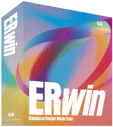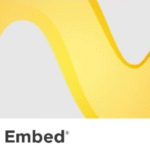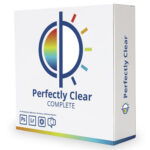When it comes to reliable, secure, and enterprise-grade operating systems, Red Hat Enterprise Linux (RHEL) is one of the top names in the industry. The latest version, RHEL 9.5, continues to deliver stability, performance, and modern features for businesses, developers, and IT professionals. This release is designed to meet the needs of both small companies and large enterprises, offering tools for security, scalability, and application development.
In this article, we will go through everything you need to know about Red Hat Enterprise Linux 9.5, including its overview, features, technical setup details, system requirements, and finally how you can get the free download.
Red Hat Enterprise Linux 9.5 Overview
Red Hat Enterprise Linux 9.5 is a professional-grade operating system built for servers, desktops, and cloud environments. It is widely used across industries like banking, telecom, healthcare, and IT services because of its long-term support and enterprise-ready performance.
RHEL is based on open-source Linux but has been refined with enterprise tools, testing, and security standards. Version 9.5 brings improvements in automation, performance tuning, and system security, making it suitable for modern hybrid cloud environments.
One of the strongest aspects of RHEL is its life cycle support. Red Hat provides updates, patches, and security fixes for many years, making it a trusted choice for businesses that need stability.
Whether you are a developer building apps, a system administrator managing servers, or a business looking for a secure OS, RHEL 9.5 has something for you.

Red Hat Enterprise Linux 9.5 Features
RHEL 9.5 introduces a wide range of powerful features. Here are the key highlights explained in simple words:
1. Improved Security
- Comes with SELinux (Security-Enhanced Linux) to control access and protect from threats.
- Built-in system-wide cryptographic policies to keep communication and data safe.
- Regular security patches and updates from Red Hat.
2. Performance Enhancements
- Faster boot times and better resource management.
- Optimized performance for databases, containers, and cloud workloads.
- Efficient use of system memory and CPU resources.
3. Automation with Ansible
- Seamless support for Ansible automation tools.
- Allows IT admins to automate repetitive tasks like system updates, configuration, and deployments.
4. Container Support
- Fully integrated with Podman for managing containers.
- Great for developers working with Docker-compatible containers.
- Makes it easier to deploy applications in cloud and hybrid environments.
5. Cloud-Ready
- Designed to run smoothly on AWS, Azure, and Google Cloud.
- Supports hybrid cloud environments, so businesses can mix on-premises and cloud servers.
6. Developer Tools
- Comes with GCC compilers, Python, Node.js, and other programming tools.
- Developers can test, build, and run applications on the same platform used in production.
7. User-Friendly Web Console
- Provides an easy-to-use Cockpit web interface.
- Admins can monitor performance, manage storage, and update systems directly from a browser.
8. Long-Term Support
- Red Hat provides up to 10 years of support for each major version.
- This means businesses can rely on RHEL without worrying about frequent major upgrades.

Red Hat Enterprise Linux 9.5 Technical Setup Details
Before downloading and installing RHEL 9.5, it’s good to know what’s included in the setup. Here are the technical details of this release:
- Software Full Name: Red Hat Enterprise Linux 9.5
- Setup File Name: RHEL-9.5.iso (official ISO image)
- Setup Type: Full standalone installer (bootable ISO)
- Compatibility: 64-bit architecture only
- Latest Version Release: 2025
- Developers/Authors: Red Hat, Inc.
The setup process is straightforward. You download the ISO file, create a bootable USB or DVD, and install it on your machine. During installation, you can choose between Server mode or Workstation mode depending on your needs.

System Requirements for Red Hat Enterprise Linux 9.5
To run RHEL 9.5, your system needs to meet the minimum hardware requirements. These ensure smooth installation and stable performance:
Minimum Requirements:
- Processor: 2 GHz Dual-Core or higher
- RAM: 2 GB (4 GB recommended for better performance)
- Storage: At least 20 GB free disk space
- Graphics: Standard VGA compatible graphics adapter
- Architecture: 64-bit only
Recommended Requirements:
- Processor: 4-Core CPU or higher
- RAM: 8 GB or more for servers
- Storage: 40 GB or higher (especially for servers and cloud environments)
- Network: High-speed internet connection for updates and cloud integration
These requirements make sure RHEL can handle workloads ranging from simple desktop use to enterprise-level servers.
Red Hat Enterprise Linux 9.5 Free Download
You can download the official ISO image of Red Hat Enterprise Linux 9.5 directly from Red Hat’s official website.
- Trial / Free Developer Edition: Red Hat offers a free developer subscription where you can use RHEL for personal or development purposes at no cost.
- Enterprise Edition (Paid): For businesses, a subscription is required to get full support, security updates, and enterprise tools.
If you only want to test RHEL 9.5, you can sign up on the Red Hat Developer Program and download the ISO free of charge.













